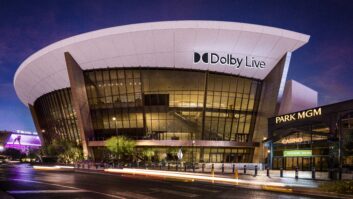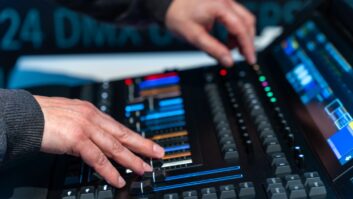The live events sector covers a lot of ground. Corporate presentations and conferences to festivals and concerts, with art installations, fashion shows, product launches and cultural celebrations in between – all these are events of different styles and scale. Some have always relied on sound systems for a major part of their impact; others have only recently realised what audio can do in both reaching the audience but also creating something fully and engaging and experiential.
That experience was almost lost completely during the pandemic and there were concerns that it would never return, at least not as fully as before. Many of those working in the sector left, never to return, but it does appear that rental companies and manufacturers of the audio equipment for events are enjoying a busy and successful year, in some cases their best ever. This is not just at the larger-scale end but medium-sized and small events as well, which are also looking for the best possible sound quality and performance.
The resurgence of the touring and festivals sector is confirmed by Dave Preston, project manager at audio and video equipment provider Solotech. Encompassing leading UK sound rental companies SSE Audio, Wigwam and Capital Sound, BCS Audio, Solotech works on major tours and outdoor events, supplying equipment from the likes of d&b audiotechnik, L-Acoustics and Martin Audio. “The summer has been really busy,” Preston says. “Last year we had a few shows with lower capacity but this year has been back to full capacity, with fewer Covid restrictions.”
This return and increase in business during 2022 is confirmed by Andy Simmons, UK sales manager for NEXO. “The companies are having a busy summer as a result of coming out of Covid, where people were not able to go to events,” he says. “From a rental perspective there’s been a raft of new events, including music shows, and there is now a requirement for more equipment.”
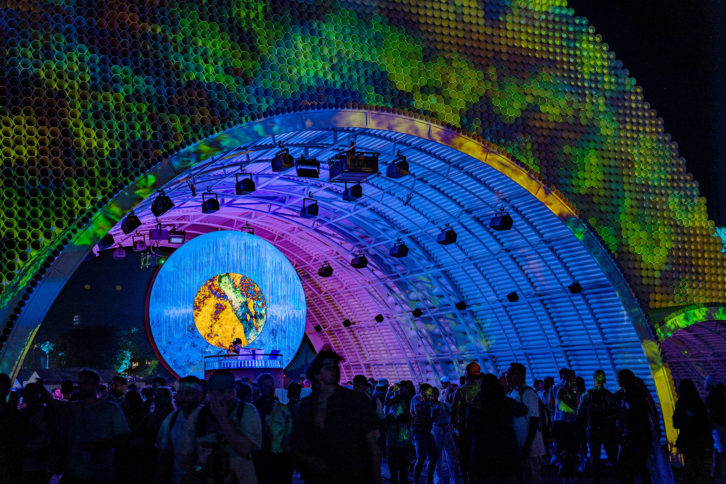 An area where Simmons is seeing particular growth and interest in audio quality is sport. While fitting out stadiums and arenas with pro audio equipment as well as public address and voice alarm (PA/VA) systems is not a new trend, it is one that continues to grow. This is because many clubs and governing bodies are adopting the US fashion for presenting matches and games as entertainment events, with live music and other performances before play even starts and then again during the interval.
An area where Simmons is seeing particular growth and interest in audio quality is sport. While fitting out stadiums and arenas with pro audio equipment as well as public address and voice alarm (PA/VA) systems is not a new trend, it is one that continues to grow. This is because many clubs and governing bodies are adopting the US fashion for presenting matches and games as entertainment events, with live music and other performances before play even starts and then again during the interval.
“It’s a big thing now in football and cricket, where there are new formats such as The Hundred,” Simmons says. “We are seeing half-time shows being staged and stadium operators want an entertainment system for doing that. The kinds of thing we’re talking about are installing subwoofers in the roofs of football stadiums. And the recent installation at Swansea City’s ground, which was carried out by Vaughan Sound, features our loudspeakers and amps on a networked audio over IP system with QSC Q-SYS dual network processors. This kind of set-up can be used on its own but will also enhance a band’s touring system when they play a stadium.”
LARGER SCALE
Installations such as this fit into the ‘large-scale event’ category. This would be the type of grouping many would picture when thinking about event venues, but there is also an increase in demand for good quality sound systems from medium-size and smaller events. Simmons points to the relatively new phenomena of village or community festivals, which he says are now using the same kind of loudspeakers as stadiums. “Expectations have changed and people have moved on from 100V line speakers on stands,” he explains. “They now want it to sound like Glastonbury.”
Tony Szabo, director of applications project for EMEA at L-Acoustics, picks up on this point, saying people’s experience of sound will inform their choice of equipment. “It’s all about reference,” he comments. “If someone organising an event has nothing to refer to in terms of high quality audio, they’ve going to be happy with a speaker on a stick. But if they go to shows on a regular basis, they will know about good audio. And when they get a taste for quality and have more budget, they will invest in better equipment.”
L-Acoustics is best known for its big line arrays, with the K Series being its current offering in this category. But Szabo observes that the company, like most loudspeaker manufacturers, also produces short and medium throw systems, including point source and powered loudspeakers, for smaller events. Although the three areas of small, medium and large events would appear to be well defined and self-contained in terms of what technologies would be used for them, there does appear to be more crossover. This is not just between small and medium and medium and large, but also small and large.
“We have the X Series point source system for small events, while the A Series can be used for medium-size productions,” Szabo says of L-Acoustics’ range. “Going to large formats there is the K Series but we can also put a bracket on the smallest member of that range, the Kiva, so it can sit on a stand. This is because big PA companies do smaller gigs as well.”
When it comes to corporate presentations and events such as fashion shows, Szabo comments that production companies are now looking for loudspeakers that are either unobtrusive or which blend into the staging. “We’re seeing that with the Syva, which was designed with no lifting handles and looks very elegant,” he says. “It can be put along the side of a catwalk and no one in the audience thinks it’s a loudspeaker. What we are trying to achieve with our smaller products is something that is plug-and-play that can be set up with as little tuning as possible.”
INCREASED DEMAND
RCF is a company that has concentrated on the smaller and medium-sized end of the event production market but also reports an increased demand from these areas for equipment on a par with what is used for large-scale events. “We’ve seen the increase in local village festivals and a lot of the companies supplying equipment for them are going for a line array on a pole, like our HDL6,” says UK director of sales Dean Davoile. “What they’re looking for is something that is not demanding to set up and doesn’t need a lot of DSP.”
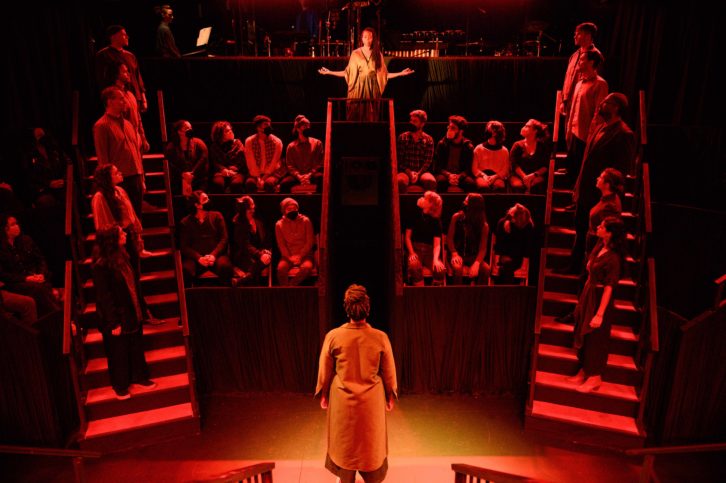 Davoile adds that in recent years new, small PA hire companies have been established around the UK, each servicing a healthy demand for sound equipment from small local concerts, festivals and community and corporate events. “Five or six years ago the people running these firms would have been in tribute bands or working as DJs,” he says. “Now they’ve morphed into little production companies, hiring out the gear they’ve put together over the years. Each individual company can provide enough equipment for small events and when there is a larger one, they can come together to service that gig.
Davoile adds that in recent years new, small PA hire companies have been established around the UK, each servicing a healthy demand for sound equipment from small local concerts, festivals and community and corporate events. “Five or six years ago the people running these firms would have been in tribute bands or working as DJs,” he says. “Now they’ve morphed into little production companies, hiring out the gear they’ve put together over the years. Each individual company can provide enough equipment for small events and when there is a larger one, they can come together to service that gig.
In addition to village festivals, Davoile observes that stately homes and other venues are now staging events, including classical concerts , as a way to build up income post-pandemic. He also says there has been a change in the type and size of rigs that production and rental companies are buying these days: “It used to be that they would buy quite big systems but now they’re going for more smaller format boxes that can be put together to form a large system. In the past a company would have a small rig and a large rig but now it’s lots of smaller systems.”
STARTING SMALL
This change in attitude is confirmed by Will Wright, product support engineer at Funktion-One. “We are giving rental companies the opportunity to start small,” he says. “By doing that, when they want to expand or get more equipment they don’t have to buy a completely different product. They just buy more of what they’re been using. Our product range covers all sizes of loudspeaker: this includes the F Compact series, which can be standalone, through the Resolution and Evolution integrated rigs right up to our bigger systems, like the Vero range, which is the kind of thing Funktion-One is known for.”
Wright comments that the “prime objective” of any size of loudspeaker system is to “communicate what is happening on stage.” This, he adds, should be done “in the most transparent way possible, almost to the point where the audience doesn’t know the speakers are there.” The general trend for equipment today, Wright continues, is that it should be “very scalable”. This includes not just the loudspeakers but also mixing desks: “Gone are the days of having a truck just for the front of house [FOH] console.”
While the traditional big FOH desk has not disappeared, the advent of digital technology and, particularly, DSP in this part of the live event sound chain has helped produce smaller consoles with greater on-board processing power and features. Among the manufacturers that has taken this route is Allen & Heath, which still produces a range of analogue products but is these days better known for its digital mixers.
“There is the analogue ZED range, which is mainly used for budget conscious installations,” comments Nick Turner, brand manager for Allen & Heath at its UK distributor, Audio-Technica. “But we have got a lot of small events that are prepared to jump into digital with systems such as our Qu Series. Venues like the Qu16 because bar staff can work out how to use it. This isn’t the case with the SQ-5, which would blow their minds.”
Turner observes that for larger events, operators expect greater connectivity through stage boxes, with the ability to connect to external IP devices. “They can work with the dLive and Avantis consoles through an iPad or laptop software,” he says. “We’ve also got the CC-10 screen, which can be used to run a DJ set without the need for engineering support.”
IMMERSIVE AUDIO
A technology that was once very niche but which is now being adopted to add greater impact and emotional power to events is immersive audio. A number of systems to create a greater sense of envelopment are now available in the live sound domain, with audience expectation for this boosted by the growing ubiquity of Dolby Atmos in cinemas. Among the technologies on the market is d&b audiotechnik’s Soundscape. Updates to the system’s En-Scene and En-Space tools were announced recently and include sound object routing, for positioning 64 audio inputs on the DS100 Signal Engine, function group modes and the ability for the En-Space room emulation software to support delay lines on all loudspeaker groups.
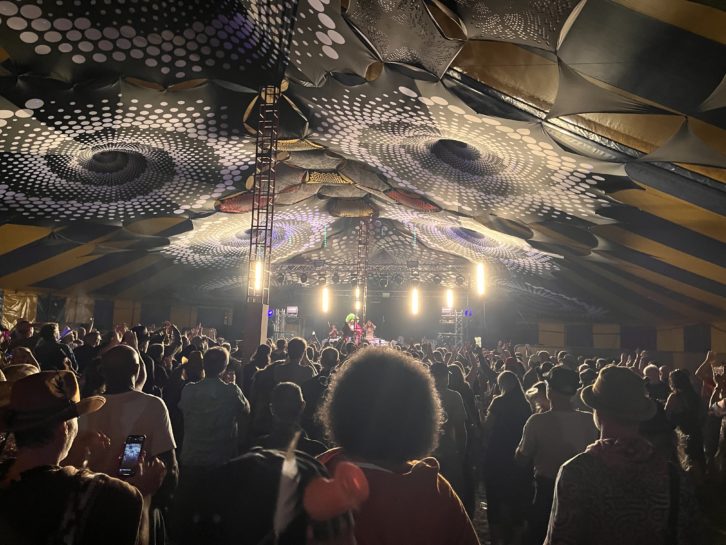 TiMax, developed by Out Board, is a long-established immersive audio technology for live sound, although company director Dave Haydon comments that spatialisation is the preferred term. Among recent developments are a new tracking system, the TrackerD4, which is being used in conjunction with Soundscape; and a spatial reverb that is still in the test phase.
TiMax, developed by Out Board, is a long-established immersive audio technology for live sound, although company director Dave Haydon comments that spatialisation is the preferred term. Among recent developments are a new tracking system, the TrackerD4, which is being used in conjunction with Soundscape; and a spatial reverb that is still in the test phase.
Haydon outlines that TiMax immersive/spatial audio is being used for a range of events, including corporate productions, theatre, award shows and large-scale outdoor occasions such as the Edinburgh Military Tattoo. “It can be for performance but also anything experiential, such as visitor centres, museums and open-air opera,” he says. “It was also used during the Platinum Jubilee celebrations for multiple stages. The dichotomy we always face with events, though, is aspiration versus budget. But more attention is being paid to this technique, with people working out what it means to be immersive.”
It seems the pandemic provided the opportunity for venue operators and production companies to consider what immersive audio could offer events and other installations. Tony Szabo of L-Acoustics, which developed the L-ISA 3D audio creation and control software, comments there was a “huge take-up” of immersive techniques during Covid as people used the enforced down period to either upgrade existing installations or build new facilities. “For venues like theatres there is an element of future proofing,” he says, “but it’s also a way to make events and productions more dramatic. The L-ISA system has been used for, among other things, a film screening with live orchestra and an installation based on 360-degree recordings of a rain forest. Immersive audio makes a connection [with the audience] and is being used for all sizes of event.”
Immersive audio in the live environment has a relatively long history and Funktion-One has been involved with it for some time, going back to older forms of the technology. “That has included simple four-point dual stereo systems and also Ambisonics,” explains Will Wright. “Tony Andrews [co-founder of both Funktion-One and Turbosound] worked with those a long time ago and our speakers are capable of producing very stable images for stereo and beyond.” Wright adds that immersive technologies are typically being used for art installations and medium-sized events. “The limitation of immersive audio is that it has a ceiling to the events it is used for,” he says. “When you go beyond that you see diminishing returns in adding sources. Also, the more immersive someone wants something to be, the more loudspeakers are needed, so the cost is greater. This again limits it to medium-sized productions.”
Funktion-One loudspeakers form part of the immersive offering provided by event sound production company Sova Audio. The other components are TiMax processing, Linear Research eight-channel amplification and Dante networking, which managing director George Yankov says can be put together to create a “holistic show” with moving lights and sound. “One of the biggest challenges when talking about spatial sound systems is [deciding] what they are supposed to be doing,” he says. “You could put a tracker on a person delivering a keynote speech but it wouldn’t really be viable. There are many other events that can take advantage of it, including music and art exhibitions. There is genuine interest in using it because it can create an emotional impact even for a small, intimate event.”
The return of live performances, theatre and art has emphasised just what people were missing during the pandemic. These productions are now back and there appears to be both the appetite and the will to use audio to its fullest extent for making events more of an event.
